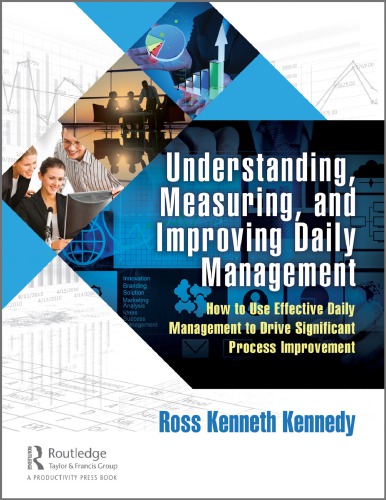

Most ebook files are in PDF format, so you can easily read them using various software such as Foxit Reader or directly on the Google Chrome browser.
Some ebook files are released by publishers in other formats such as .awz, .mobi, .epub, .fb2, etc. You may need to install specific software to read these formats on mobile/PC, such as Calibre.
Please read the tutorial at this link: https://ebookbell.com/faq
We offer FREE conversion to the popular formats you request; however, this may take some time. Therefore, right after payment, please email us, and we will try to provide the service as quickly as possible.
For some exceptional file formats or broken links (if any), please refrain from opening any disputes. Instead, email us first, and we will try to assist within a maximum of 6 hours.
EbookBell Team

0.0
0 reviewsUnderstanding, Measuring, and Improving Daily Management explains the critical parts of a continuous improvement strategy to achieve Operational Excellence and where reactive improvement through effective daily management fits in. In addition, it shows the consequences to your Operational Excellence journey if daily management is not performed well.
Reactive improvement develops the capability and discipline within the organization to be able to rapidly recover from an event or incident that stops you from achieving your expected or target performance for the day, shift, or hour and most importantly -- your ability to capture the learning and initiate corrective actions so that the event or incident will not re-occur anywhere across the organization. As such, reactive improvement focuses on improving daily management through your daily review meetings, your information centers supporting the daily review meetings, and your frontline problem-solving root cause analysis capability at all levels.
The book introduces the seven elements of reactive improvement that must work in concert for effective daily management and allows the reader to rate their site or department to determine their starting point compared to best practices:
1. Supportive organization structure to support development of your people so they have ownership and accountability for the performance of their area of responsibility;
2. Effective frontline leaders to ensure everyone else in the leadership structure are not working down a level;
3. Appropriate measures with expected targets that are linked to the site’s Key Success Factors for Operations to ensure goal alignment, and are relevant to the area being focused on;
4. Structured daily review meetings to identify opportunities (problems/incidents) and monitor progress of their solution so they don’t happen again;
5. Visual information centers that visually display daily and trending performance along with monitoring of actions to address problems/issues raised;
6. Frontline problem-solving root cause analysis capability across the site; and
7. Rapid sharing of learning capability across shifts, departments, and the organization.
The author outlines in detail why each of the seven elements are important to achieving Operational Excellence, and most importantly, how to implement each element supported with many templates and tools.